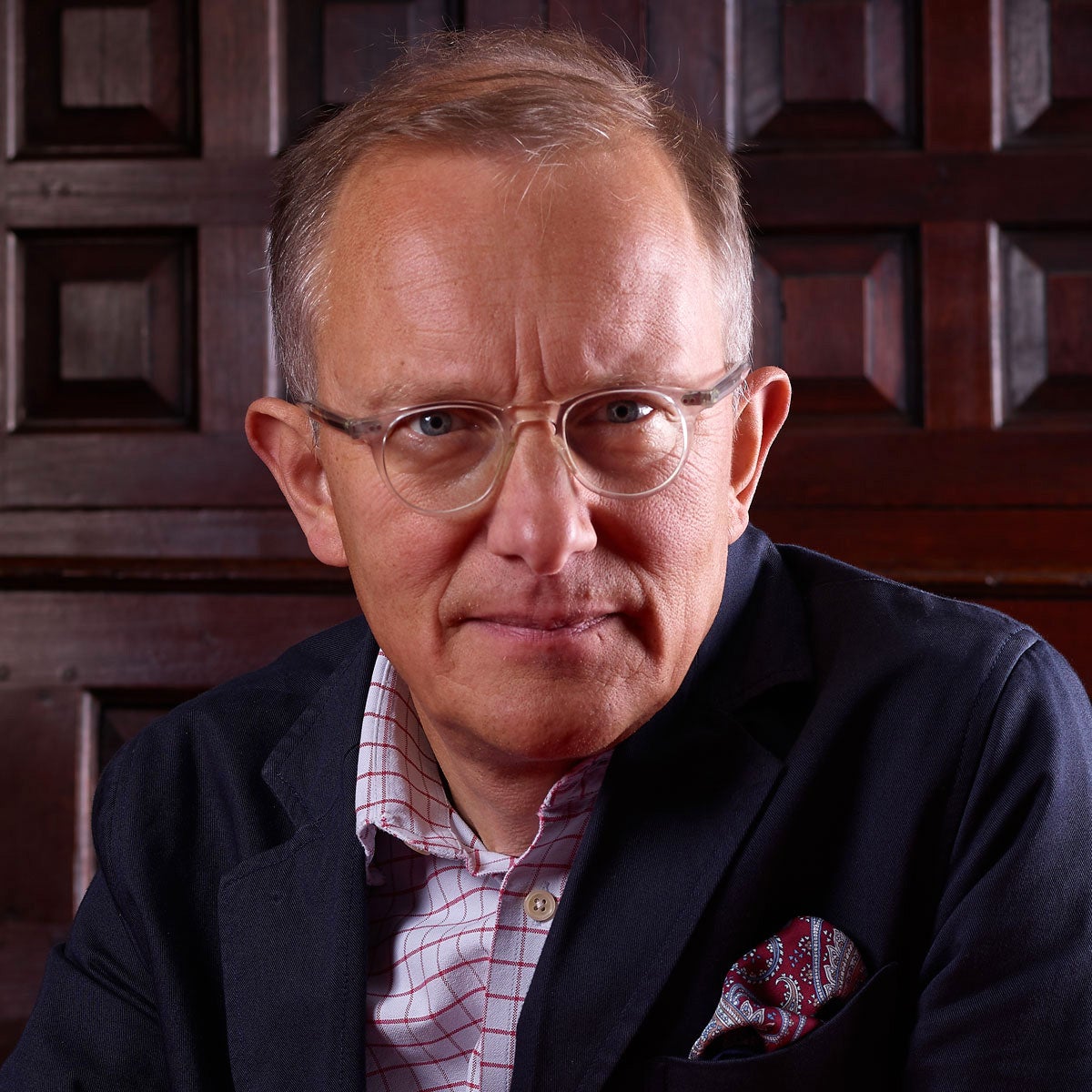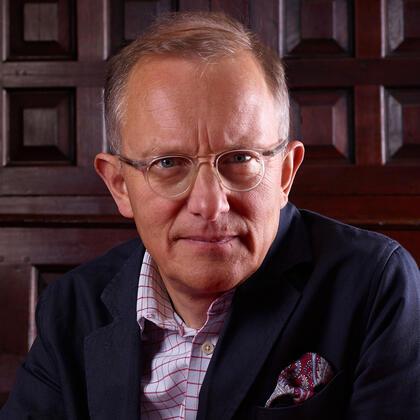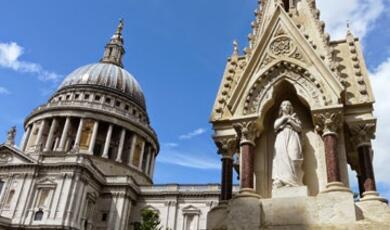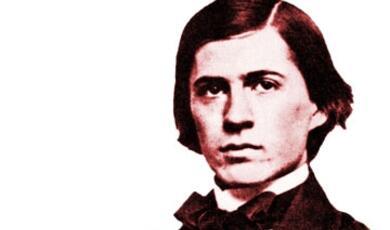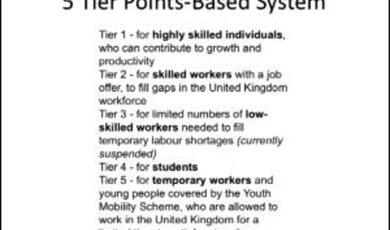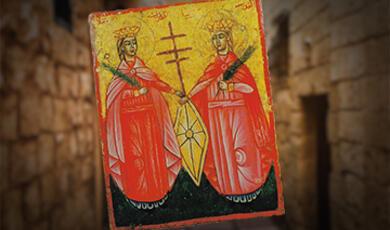Sir Christopher Wren: Architect & Courtier
Share
- Details
- Text
- Audio
- Downloads
- Extra Reading
Sir Christopher Wren’s success was underpinned by his consummate skill as a courtier, retaining the confidence of four monarchs through social and economic disasters and political revolution. Wren's life at court can be minutely reconstructed and shows a man who was first and foremost a courtier serving the architectural whims of the Stuart dynasty.
Taking Wren the courtier as its starting point this lecture uses new research to paint his talents and career in a new light.
Download Text
Sir Christopher Wren: Architect & Courtier
Professor Simon Thurley CBE
Wednesday 14 June 2023
On 28 October 1642, at the head of a twelve companies of foot soldiers, the parliamentarian Colonel, John Venn, entered the gates of Windsor Castle. Securing the fortress was, of course, a military objective but equally important was its symbolism. King Charles I had made St. George’s Chapel a model of the sort of religion he wanted for the Church of England. Ceremonious, dignified and richly furnished the chapel, and the liturgy performed in it, was therefore an abomination to the Godly Parliamentarians who opposed the King and his policies.
The Dean of Windsor, expecting trouble, had ordered the exquisite stained glass window in the chapel’s west end, containing images of no fewer than 25 popes, to be taken out and hidden. As the Dean was also ex-officio Register of the Order of the Garter he hid beneath the floorboards of the College treasury a diamond studded St. George badge of the Order of the Garter, perhaps the most valuable one ever made. The priceless registers of the Order in three great volumes, dating back to Henry VIII’s reign were also hidden.
Colonel Venn’s arrival had not only been anticipated by the Dean, because five days before his entry, the castle had been over-run by a band of local gentry sympathetic to Parliament. Fearing a royalist take-over of the fortress before Venn could get there and secure it, they had taken the law into their own hands. Demanding the keys of the college treasury from the Dean, who refused them, they brought in huge crow bars to break into the vault. Inside were beautifully fashioned silver gilt basins, candlesticks and flagons which were carried away, sent to London, and melted down for coin.
It was this sort of disorder that the House of Lords wanted to avoid, and it instructed Colonel Venn to protect the fabric and ornaments of the college from defacement. But Venn was a political radical and religious zealot and had no intention of allowing the popish ornaments of Windsor to remain. Stained glass windows were smashed, woodwork torn down, the organ demolished, the lectern, fonts and statues torn out. King Edward IV’s coat of chain mail and his surcoat embroidered with pearls and rubies was carted away and sold.
Colonel Venn was now in charge of the Castle and, not wanting to use the royal apartments, moved into the Deanery. This capacious lodging had been completed in 1352 as a relatively modest residence for the head of St. George’s College but by the early seventeenth century it had been enlarged and beautified and was a substantial house. Here for the next three years Venn presided over the Windsor garrison. The Dean, Christopher Wren, was expelled.
Sir Christopher Wren, as I shall call the architect, was born in 1632 and spent some of his childhood at the Windsor Deanery while his father, also Christopher, was dean. He was educated there and at his father’s country rectory apart from a very short stint at Westminster School during the Civil War. At Windsor he would have become familiar with the ceremony and grandeur of Charles I court and would have met the Prince of Wales, his future patron, who was just two years older than him.
Sir Christopher’s pedigree was just about as courtly as could be. His father Christopher and his uncle Matthew had both been major ecclesiastical figures at court, close to the king in both proximity and ideology. Matthew Wren, Dean of the Chapel Royal and Bishop of Ely, ended up spending 18 years in the Tower of London for his views, his brother Christopher simply lost his post and retreated into rural obscurity. Luckily for Sir Christopher his father was not financially ruined like so many dispossessed royalists. His mother was the co-heiress to a great merchant fortune, and this enabled him to fund his son’s education and broker excellent marriages for three of his daughters. All married fervent Royalists as perhaps might be expected.
Yet despite his privileged background growing up at court, it was not the ceremoniousness of Charles I’s court that was to be the greatest influence from his childhood. His father Dean Wren was not only a courtier and a divine, he owned a library of scientific books and was fascinated by botany, climatology, mathematics and architecture. He took great care over Christopher junior’s education and in particular encouraged his mastery of arithmetic.
Mathematics was to become the foundation of Sir Christopher’s world picture, the means by which the universe and its moving parts could be explained, for him the world was a machine, and it was possible by using the tools of geometry and arithmetic to unravel its workings. This was immensely exciting. Old scientific explanations derived essentially from classical Greek and Roman authors and Wren had little time for reading their disputations and from an early age turned his inventive mind to solving practical problems with new ideas.
He fell into the two great centres of new scientific thought. A group of brilliant men at Wadham College Oxford and our own Gresham College, here they talked argued, experimented and calculated and Sir Cristopher, amongst the most brilliant of them, first became Gresham Professor of Astronomy at 25, and then Savilian Professor at Oxford before he was 30. These achievements took place during the English Republic and at the Restoration, out of the Wadham and Gresham group, came the Royal Society, the oldest scientific academy in continuous existence and Sir Christopher’s introduction to King Charles II.
King Charles used to be characterised as the merry monarch, a man wholly given to pleasure and debauchery. But this could not be further from the truth, we now know that he shared the sense of excitement and possibilities of the new science and had a huge curiosity about astronomy, chemistry, physics and geometry. At Whitehall, adjacent to his most private quarters was his laboratory where he went to conduct his own experiments. So, when Sir Christopher re-emerged in his life, not as a ten year old son of a courtier, but as a mathematical genius, he was attracted to him immediately, unquestionably because of his family, but more importantly because of his brains.
But let’s not overdo the intellectual king bit, because Charles loved a joke, loved good company, loved a drink, a laugh and a good night out. While it would have been possible to have captured the king’s attention through scientific achievement it would have not been possible for Sir Christopher to win the king’s trust, friendship and high honours unless he had been very good company. Not only was late seventeenth century government personal, directed by the monarch himself, but to be the king’s architect was to be admitted into the innermost royal circle, not only to know the workings of the state rooms but to understand the secrets of the bedchamber. As I shall go on to explain, Wren was extremely good company, in fact the perfect courtier.
When, in 1669, Christopher Wren became the head of the Office of Works he inherited command of an organisation very nearly 300 years old. The office had been established by King Richard II in 1379 not only to repair and maintain the royal building stock but to project-manage new building. The Surveyor of the King’s Works was a member of the King’s Household and, although theoretically reporting to the Lord Chamberlain, in practice it was to the Lord Treasurer that Wren looked. In 1662 the Surveyor required Treasury authorisation for anything other than routine maintenance and even this was capped at £40 a year for the larger palaces and £20 for the rest. Given that almost every year the Works spent vastly more than that Wren took his orders from the Treasurer. In fact the Office of Works should really be categorised as a separate department of State as its funds came directly from the Exchequer rather than through the household. Looked at in this light Wren was essentially one of the great ministers of state on a par with, for instance, the Lord Chamberlain.
In a period when the monarch was head of the executive Whitehall, the principal palace of the British monarchy, was not only the king’s main residence, but was the centre of national administration. There is no modern equivalent that satisfactorily characterises Restoration Whitehall: huge, confusing, overpopulated – in equal measure squalid and magnificent – it was both residence and office block housing courtiers and bureaucrats. It was the centre of the world for anybody who was anybody. On assuming his senior court post in 1669 Whitehall became the centre of Wren’s life and the lodgings he was assigned there became the engine room of his career.
As well as the royal family, Whitehall was home to an army of over 800 domestic staff and perhaps 300 others who could loosely be described as courtiers. Some of these, like Wren, were granted lodgings because of their household, political or administrative appointments, but for the majority angling for lodgings was a feature of life. Everyone wanted spacious apartments close to the king. Few got them. Though the palace in the 1670s had around 1,500 rooms there was always cut-throat competition for even the smallest cellar or attic. Because most people held them by royal warrant for life, there were long waits for the best lodgings, even for important people.
Policing the huge number of residents was complicated by the fact that some parts of a lodgings’ fabric were regarded as the responsibility of the Office of Works while other elements could be altered, with permission, by the occupants. In reality it was extremely difficult to persuade the Office of Works to pay for altering a private individual’s quarters and so financial responsibility normally fell to the occupant. For this reason the lodgings of the most important courtiers, were essentially privately funded residences. The fact that lodgings were built at their occupants’ expense gave them considerable rights and as the reign advanced lodgings were increasingly held under lease rather than by warrant.
The Office of Works and Sir Christopher’s lodgings were situated in Scotland Yard. This area of land lay between the northern part of Whitehall containing the kitchens and the southern boundary of the great aristocratic mansions at Charing Cross. Henry VIII had enclosed the area during the construction of Whitehall Palace in the 1530s and had used it for the storage of building materials. He also built a dock and barge house to store the royal barges in.
We can get a sense of the area in the copper plate map where we can see the size of the area, the conglomeration of offices, workshops and storehouses and the industrial activities going on there. Occasionally the account rolls of the Office of Works mention the buildings that they occupied, in 1604-5, for instance there is reference to the office in which the clerks enrolled the Works accounts.
In the first year of King James I, Simon Basil, who was the Comptroller of Works under Queen Elizabeth, built a house on the northernmost section of Scotland Yard; it had a hall and a parlour and a kitchen with three rooms over it and a back yard. Basil became Surveyor of Works in 1606 and five years later James I granted him a 60 year lease on his house and the land around it. Basil promptly built two more houses on the land from which he gained a good income. Basil died in September 1615 and his widow leased the house to his successor, Inigo Jones who, at the start of the Civil War, was still living there. An inventory of his goods taken by Parliament after he was ejected listed ‘Goods and instruments mathematical belonging to his profession and certain models and other like commodities’. So, before the Restoration the Surveyor of the King’s Works lived in Scotland Yard in a private house on a crown lease. But by 1660 Jones’s house had passed into other private hands and was not available.
In 1660 Charles II appointed Sir John Denham as Surveyor of Works. He was a loyal Royalist who had been at Charles I’s side at Hampton Court, on the Isle of Wight, in London and then had been at the Court of Henrietta Maria in France. With most of his lands sequestered, by 1648, he was with Prince Charles at the Hague where he acted as messenger between Charles and his mother. With no money to reward Denham's services, the king promised him that, on his Restoration, he would succeed Inigo Jones as Surveyor of Works. It might have seemed a hollow reward at the time but, in 1660, the king kept his word.
The restored Office of Works was established on exactly the same basis as it had been before the Civil War. Denham, as its head, was leased a plot of land in Scotland Yard on which he could build. In fact Denham did much the same as Simon Basil, constructing a commercial terrace of houses to let for an additional income. He, himself, lived in a house to its south which was built at the expense of the king. This was the surveyor’s residence, the house that Sir Christopher Wren inherited as his official Whitehall residence in 1669.
Luckily one of the very first tasks assigned to Wren as Surveyor was making an accurate survey of Whitehall in preparation for the king’s great plan to rebuild it. This survey completed in 1670 shows in detail the whole of Scotland Yard. This was the engine room of royal building works. On the riverside was the dock with its wharfs for the loading and unloading of building materials. Nearby were the sheds and storehouse containing stores of brick, stone, timber, glass and much more. The long range that divided the ground of Scotland yard in two contained the houses and offices of the master glazier, the master mason, master carpenter, the royal locksmith and the Clerk of Works.
The plan also identifies with precision both Denham’s new terrace and the house that he occupied. This house was Wren’s main residence between 1669 and his loss of office in 1718 a period of nearly fifty years. He had no other home, no city mansion, no country seat; under William and Mary he had an official residence at Hampton Court on the Green, and another small official cottage at Kensington, but Wren lived the whole of his architectural career in Whitehall Palace a stone’s throw from the royal apartments.
After Sir Christopher’s death his house in Scotland Yard was found to be in very poor condition and was carefully surveyed in order to decide whether to rebuild or refurbish. The plan survives, and I believe has never been identified before. It shows the ground floor of the surveyor’s lodgings and adjacent buildings. There are three colours. The yellow is the adjoining property and you can ignore that. The grey is the official office of the Office of Works, the place where his assistant architects and clerks worked. It was joined with his own residence at first floor level by a door so he could step out in his dressing gown and go straight into his office.
On the ground floor of his private residence was a hall with a scullery and kitchen behind. There was a great stair that led up to the first floor. There he had a great dining room, a smaller private dining room, a drawing room, dressing room and bedroom. The latter had been set up with a fashionable bed alcove by Sir John Denham and in this the surveyor’s bed was placed. There was a floor above for servants also probably containing the nursery for his children. There were cellars full of wine, two yards and a long narrow walled garden, in here in 1669 he set up a garden seat with a pediment above it. Although slightly further for the royal lodgings than some apartments, Wren’s house was amongst the largest and best appointed of all the houses allocated to senior courtiers.
Here he lived happily with his first wife Faith, and it was in Scotland Yard that she died of smallpox in 1675. Two children were born to her including Christopher the younger who survived his father. In 1677 Wren married his second wife Jane Fitzwilliam in the chapel royal at Whitehall. She was already pregnant which shows Wren was not without an active libido. After giving birth to a daughter, she also died in 1680. So, in the 1680s we have to imagine the house in Scotland Yard with three young children running around probably peeking through the connecting door into the adjoining Office of Works. Wren’s daughter never married and lived at home with her father; his younger son, William, was mentally handicapped and also lived at home, only Christopher junior eventually moved out to a house bought for him in St. James’s by his father.
Wren’s official remuneration as surveyor was £382 5s 8d a year. His salary was made up of three allowances: the first, paid by the Exchequer was a daily fee of two shillings plus sixpence a day for a clerk, a total of £45 12s 6d a year. The second was an historical legacy. The Surveyor used to be one of the household officers who wore a uniform, or livery, and after these were abolished for senior courtiers, the fee for buying the outfit was still paid at £12 13s 4d a year. The third stream of income was issued by the Paymaster of the Office of Works and comprised a bundle of allowances and compensations that actually made up the bulk of his salary.
£380 a year was barely enough to sustain Wren as a Gentleman and way beneath the salaries and allowances of the more senior household officials. The Master of the Robes, who looked after the king’s personal wardrobe, was paid £500 a year and he required no technical knowledge and little special skill. In later life Wren was to remark to his son Christopher that Charles II had done him a disservice in enticing him into architecture as, if he had stuck at medicine, he would have become a rich man.
This was perhaps a bit disingenuous because in addition to his salary from the Office of Works Wren received fees for his work rebuilding the parish churches in the city of London destroyed by the great fire: this was £100 a year, and of course, in addition, were his fees as architect for St Paul’s cathedral, another £200 a year. Later he was also paid for his work for the Royal Hospital in Greenwich and private commissions at Cambridge University and for some courtiers. His total annual earnings in the 1690s cannot have been much less than £750 a year. In fact, so confident was he of his financial position that he was prepared to waive the fee for the design of the Royal hospital in Chelsea.
So, in reality, Wren was able to cut quite a dash at court. He maintained a carriage with liveried coachmen and a stable full of horses in Scotland yard. He had several servants including a footman normally in attendance. He dressed in the fashions of the day, entertained liberally and furnished his house fashionably. He commissioned portraits of his wife, bought furniture and kept up with interior design fashions. When he moved in in 1670 the sergeant painter redecorated more or less the whole house and, for his second marriage, he ordered the redecoration of his bedchamber; the old frieze and ‘bed mould’ of 1661 was taken down and 50ft of new bed mould was erected in its stead; the door to his dressing room next door was moved and a room nearby partitioned. In 1676 a custom-made drawing table was installed in his house, not in the office next door, and in 1681 his private closet was enlarged.
The house was decorated with a large number of prints including many of buildings of his own but also prints of paintings, interiors, classical busts and statues. One room, perhaps his closet, contained bookshelves containing some 600 volumes. Larger cabinets, perhaps in the same room, contained some 900 drawings and there was a cabinet with antique gems and medals.
So let’s be very clear Wren lived in style and luxury with his family at court in a large house attached to his office. This was the way of all the great office holders at court, office and home were one, just as 10 Downing Street or the White House in Washington are today. This being the case what do we know about his interactions with the king and the court? There are two sources of information which can help us get right into the daily life of this extremely busy and fashionable man.
The first is the diary of Robert Hooke, a brilliant scientist and natural philosopher and the curator of experiments for the Royal Society. His interest moved into surveying and architecture and he had an intimate association with Wren for some 50 years. From 1672 to 1680 and then 1688-93 he kept a notebook recording his daily movements, thoughts and impressions capturing Wren’s life in great detail. He was with him several times a week recording 75 meetings with him in 1674, 70 in 1675 and 80 in 1676.
The entries are a bit odd to read, Hooke being obsessed with his poor health and his bodily functions. On August 1, 1675, he writes of taking ‘volatile spirit of wormwood which made me very sick and disturbed me all the night and purged me in the morning. Drank small beer and spirit of Sal ammoniac. I purged five or six times very easily on Sunday morning. I hope this will dissolve some of that vicious slime that hath so tormented me in my stomach and guts’. He lived in Gresham College in those happy far-off days when professors were given a residence in the City of London. He regularly attended lectures including one on Thursday June 17th 1680 when he recorded ‘attended morning lecture, none came, not one’.
Nevertheless, we hear of Hooke turning up at Wren’s house in Scotland yard and dining there with him, with other major court figures, politicians and foreign dignitaries, and sometimes other officers of the office of works. Presumably the great dining room was for larger parties and the many accounts of intimate dinners were in the small dining room upstairs. Lady Wren was there sometimes, but I get the impression not often. Hooke meets Wren in coffee houses and taverns and at Gresham College, of course, as well as at council meetings of the royal society and on numerous building sites – the city churches, and St. Paul’s. But all the time there is the magnetic draw of Whitehall where their shared professional responsibilities for the City Churches and St Paul’s cathedral required them to audit accounts and approve payments to contractors.
This is a marvellous source of information for Wren’s life comprising many hundreds of entries recording his movements, who he saw, what he was working on and where he liked to eat and drink. The other key source is more empirical. The Surveyor was entitled to claim travel and subsistence if he left London. Travelling round the city was covered by an allowance of 4s a day in his annual remuneration but when he left London, he was able to claim and additional 4s 10d a day. This was claimed each month in arrears. These travel claims all survive and tell us not where he was going but the fact that he was going.
This allows us to do some clever stuff. I’ll give you an example. As usual throughout June and July 1679 Hooke and Wren were meeting at least once a week, often three or four times. But suddenly after meeting Wren in a City Coffee House on August 1 he does not see him again until 30th August at St Paul’s Cathedral, an unnaturally long gap of a whole month. If we turn to the Office of Works riding charges for August, we see that after many months of inactivity he charges for two days riding charges, most likely one for the way out and another for the way back. But how can we work out where Wren went.
In 1679 The king’s rebuilding of the royal lodgings at Windsor Castle was completed and the whole court decamped from Whitehall to Windsor for four weeks of fun and frolics, balls, hunting, card-playing plays, feasting and music. Everyone was there, it seems, including Wren. This wasn’t a professional trip – Hugh May had been the architect for the castle not Wren and, although it is possible that architecture was discussed, this month was about being a courtier and not just an architect.
October 1676 is another good example. That month Wren clocked up thirteen days charges when for the previous three months there was nothing and the following four months he didn’t make a claim either. The explanation is that on 4th October the King and the Duke of York moved, with the court to Newmarket – Wren clearly followed them. Hooke dined with Wren on October 5th the day after the court left, but did not see him again until Wren’s birthday dinner on 20th October an absence of over two weeks.
In September 1682 after weeks of claiming no travel the court removed to Winchester and Wren clocked up six days riding charges. In 1674 when Charles moved the court to Windsor Wren incurred two days riding charges in each July and August and Hooke notes that Wren was ‘at court’. He came back to London part way through the stay to attend to business but returned to Windsor Hooke noting, on July the 18th that he was finally back at Whitehall.
I think this is enough to demonstrate that when the court left Whitehall for Windsor, Newmarket or latterly Winchester Wren was hot on its heels. We should not imagine Wren was busy discussing building works during these peregrinations with the court. He was a courtier and threw himself into whatever entertainments were on offer. The Diarist John Evelyn spent the night at Newmarket in October 1671 and found ‘the jolly blades racing, dancing, feasting and revelling, more resembling a luxurious and abandoned rout than a Christian Court’. Racing was not the only entertainment at Newmarket; there was a tennis court and a bowling green and most important of all a cockpit. Sometimes while the court was in residence there were cock fights twice a day. At night there were plays.
Eye witness accounts of Wren’s more formal interactions with Charles II are much harder to find. But we know that he was personally instructed by the king on every major project and many much smaller ones. In early 1683 the lawyer and architectural connoisseur Roger North was at a meeting of the Treasury in the presence of the king. Wren had been summoned, and the subject was the financing of the new palace at Winchester. The king asked Wren how long it would take to build; he answered two years, but Charles thought this too long and enquired whether it could be built in one. Yes, Wren replied, but with ‘great confusion, charge, and inconvenience’. Notwithstanding this warning Charles made the decision to proceed and, on 9 February the Treasury authorised expenditure of £36,000.
Other references show that the relationship was not always easy. In some way Wren briefly fell out with the king in October 1674, and after the great model for St Paul’s was rejected by the royal commission and the King told Wren to start again on a new design he openly wept in the king’s presence.
These occasions, I suggest are signs of the intimacy that Charles II and Wren shared and of his access to him. Wren was very jealous of this position as is revealed in a very interesting exchange with his friend Robert Hooke.
One of Hooke’s most intense areas of inventiveness was in clockmaking and one of his inventions, a magnetic clock was shown to the king by Richard Busby, a royal favourite. Charles II, intrigued, wanted to meet Hooke and he was summoned to court where Silius Titus, one of the Grooms of the Bedchamber presented Hooke to the king who then asked Hooke into his closet for an intimate examination of his double pendulum sea clock which he had brought with him. Leaving the king Hooke, full of excitement at his royal interview, went straight to Scotland Yard to show the clock to Wren. Wren was stone cold to his friend telling him that he would never have a room at Whitehall and that he would have to meet the king in future in St James’s Park. Wren, Hooke noted, seemed jealous of him. In fact Wren was so cross that Hooke, a socially inferior person and his junior in every way had gained favoured access to the king that he withheld his wages despite having the money about his person. It took three weeks for Wren’s irritation to abate and even then Hook had to hang around for hours before Wren signed off his bill.
The right order of things was reestablished in March 1678 when Hooke was having trouble with his lately deceased brother’s will. Wren, who had free access to the King raised it with him much to the satisfaction of Hooke. In 1680 Hook expressed an interest in seeing the royal library at Whitehall; the king not present, Wren used his pass key to take Hooke into Whitehall and show him the room.
So as we try and get closer to this man 300 years after his death we can begin to understand a bit more about him. He was blessed with a pedigree that gave him a deep understanding of the court, the king, its ceremonies and behaviour. He shared with Charles II a fascination with science and experimentation and was spotted by him as the vehicle to realise his architectural ambitions. And so he moved to court and that was where he spent his life. Unlike so many awkward geniuses he was engaging, amusing, a great conversationalist able to navigate the treacherous rapids of court life. Tonight I hope I have introduced you to the flesh and blood of this great man, no lonely genius but a cog in the great machine of state oiled with his own charm and genius.
© Professor Simon Thurley, 2023
This event was on Wed, 14 Jun 2023
Support Gresham
Gresham College has offered an outstanding education to the public free of charge for over 400 years. Today, Gresham College plays an important role in fostering a love of learning and a greater understanding of ourselves and the world around us. Your donation will help to widen our reach and to broaden our audience, allowing more people to benefit from a high-quality education from some of the brightest minds.


 Login
Login
